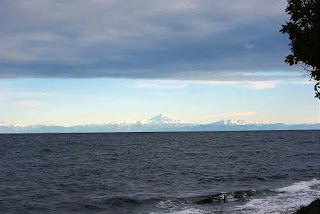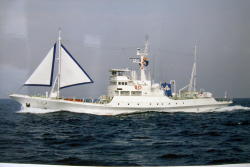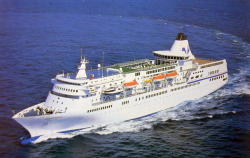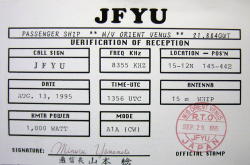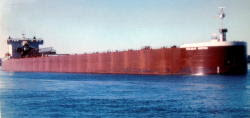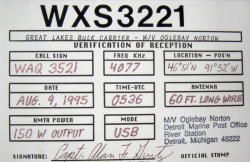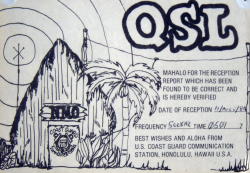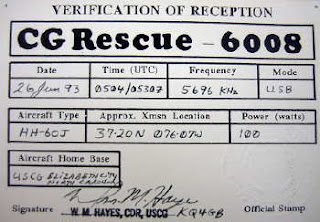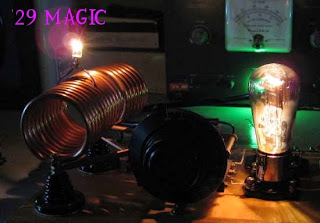Author Archive
 PAØRDT Miniwhip Shakedown
PAØRDT Miniwhip Shakedown
The following blog was originally published in January, 2016 but there is still much interest in this popular and well-performing antenna.
***********************************
A recent posting to the 'ndblist group' by Mike, an ardent NDB DXer in the UK (Sussex), announced the recent completion of his four-part video series describing the installation and testing of a new PAØRDT active antenna.
 If you may be contemplating the installation of an active antenna such as this, or perhaps making a start at DXing the NDB band or listening on 630m, then you might enjoy following Mike's journey as he demonstrates that living in the noisy suburbs need not keep you from enjoying the LF/MF bands. Mike includes some interesting tests involving his grounding system versus noise ingress and the results of keeping the electrical main's ground isolated (or not) from the antenna cable's ground.
If you may be contemplating the installation of an active antenna such as this, or perhaps making a start at DXing the NDB band or listening on 630m, then you might enjoy following Mike's journey as he demonstrates that living in the noisy suburbs need not keep you from enjoying the LF/MF bands. Mike includes some interesting tests involving his grounding system versus noise ingress and the results of keeping the electrical main's ground isolated (or not) from the antenna cable's ground.
The PAØRDT active whip is available from PAØRDT himself or if you are handy with a soldering iron, you might choose to build the same antenna in your workshop. These simple yet highly effective receiving antennas are being used successfully by hundreds of listeners all over the world and for their size provide some pretty amazing performance.
Much more information on the PAØRDT e-probe antenna may be found here in a previous blog posting. To see more of Mike's videos, you can visit his interesting Youtube Channel here.
***********************************
A recent posting to the 'ndblist group' by Mike, an ardent NDB DXer in the UK (Sussex), announced the recent completion of his four-part video series describing the installation and testing of a new PAØRDT active antenna.
 If you may be contemplating the installation of an active antenna such as this, or perhaps making a start at DXing the NDB band or listening on 630m, then you might enjoy following Mike's journey as he demonstrates that living in the noisy suburbs need not keep you from enjoying the LF/MF bands. Mike includes some interesting tests involving his grounding system versus noise ingress and the results of keeping the electrical main's ground isolated (or not) from the antenna cable's ground.
If you may be contemplating the installation of an active antenna such as this, or perhaps making a start at DXing the NDB band or listening on 630m, then you might enjoy following Mike's journey as he demonstrates that living in the noisy suburbs need not keep you from enjoying the LF/MF bands. Mike includes some interesting tests involving his grounding system versus noise ingress and the results of keeping the electrical main's ground isolated (or not) from the antenna cable's ground. The PAØRDT active whip is available from PAØRDT himself or if you are handy with a soldering iron, you might choose to build the same antenna in your workshop. These simple yet highly effective receiving antennas are being used successfully by hundreds of listeners all over the world and for their size provide some pretty amazing performance.
Much more information on the PAØRDT e-probe antenna may be found here in a previous blog posting. To see more of Mike's videos, you can visit his interesting Youtube Channel here.
 Hunting For NDB Pairs In CLE251
Hunting For NDB Pairs In CLE251

A fairly popular CLE event held around this time of the year is the "Noah's Ark" Holiday CLE!
It calls for listeners to hunt down and log pairs of NDBs from as many 'radio countries' as possible.
As explained below, in NA and Australia, states and provinces count as separate 'radio countries' thankfully.
For those unfamiliar with this monthly activity, a 'CLE' is a 'Co-ordinated Listening Event', as NDB DXers around the world focus their listening time on one small slice of the NDB spectrum.
If you've been meaning to participate in CLE, then maybe this weekend is a fine time to try! We continue to have a lot of first time submissions so you won't be alone!
As well, if you're trying to learn CW, copying NDBs is perfect practice as the identifier speed is generally slow and the letters are repeated again every few seconds!
This past week has seen a long period of great propagation quickly get worse with the arrival of another coronal hole stream. This is quickly abating and the ionosphere may well have fully recovered for the nine-day event.
When tuning for NDBs, put your receiver in the CW mode and listen for the NDB's CW identifier, repeated every few seconds. Listen for U.S. NDB identifiers approximately 1 kHz higher or lower than the published transmitted frequency since these beacons are modulated with a 1020 Hz tone approximately.
For example, 'AA' near Fargo, ND, transmits on 365 kHz and its upper sideband CW identifier is tuned at 366.025 kHz while its lower sideband CW ident can be tuned at 363.946 kHz. Its USB tone is actually 1025 Hz while its LSB tone is 1054 Hz.
Often, one sideband will be much stronger than the other so if you don't hear the first one, try listening on the other sideband.
Canadian NDBs normally have an USB tone only, usually very close to 400 Hz. They also have a long dash (keydown) following the CW identifier.
All NDBs heard in North America will be listed in the RNA database (updated daily) while those heard in Europe may be found in the REU database. Beacons heard outside of these regions will be found in the RWW database.
From CLE organizer Brian Keyte, G3SIA, comes the details:
Hello all
We hope you are looking forward to our "Noah's Ark" Holiday CLE – it
starts at midday on Christmas Day and you can listen at any times
from then right through to midday on Thursday 2nd January.
It's very straightforward. Just as the animals went into the Ark two by two,
so the Radio Countries' NDBs will go into our logs two by two.
Days: Wednesday 25th December to Thursday 2nd January
Times: Start and End at midday, your LOCAL TIME
Target: A maximum of TWO NDBs from each Radio Country
Range: 190-1740 kHz
So during the course of the event we shall try to log TWO NDBs from each
of as many Radio Countries as we can - e.g. 2 from France, 2 from Spain,
2 from the Florida, 2 from Quebec, 2 from Brazil, 2 from New Zealand, etc.
Each Australian and USA State and each Canadian Province is a separate
Country. For our full list see: www.ndblist.info/beacons/countrylist.pdf
Each NDB making the pairs can be logged at any times during the event.
UNIDs, Amateur, DGPS and Navtex beacons are not included, but any
UNIDs can be shown in a separate 'non-CLE' list or in a separate email.
Noah didn't have single animals in the Ark, but if you can only log ONE
NDB from a Country, it will still be welcome in your log without a mate!
Everyone is asked to please listen for YOUR OWN NEAREST active NDB
and include it with the one other logging for that Country (if any).
For details of a country’s active NDBs go to www.classaxe.com/dx/ndb/rww/
If you are listening from Europe or North America replace the rww by
reu or rna respectively. Next to 'Locations' enter the State or Country
abbreviation(s), then select 'Only Active’ at the bottom.
Post your final, complete log to the List (please not in an attachment)
with CLE251 and FINAL in the Subject heading, to arrive at the very latest
by 09:00 UTC on Saturday 4th January.
As usual, please include on every line of your log:
# Date** and UTC (the day changes at 00:00 UTC)
# kHz (the nominal, published, frequency if possible)
# Call Ident
Those main log items must be shown FIRST with the country shown
LATER in the same line, together with any other (optional) details
such as location, offset and distance.
**IMPORTANT - IF YOU USE THE SIMPLE 'dd' DATE FORMAT.
The input program for REU/RNA/RWW does not allocate the month and year.
The good people who enter the information for us then have to tell the
program what month and year to use. That is not a problem IF ALL
LOGGINGS FOR THE SAME MONTH ARE GROUPED TOGETHER.
So please help us by making sure you separate your December and
January loggings, even if it breaks up some Noah pairs.
Where possible, we suggest that logs are in Radio Country order, instead
of in the usual kHz order, so that the country pairs appear together.
We'll send an ANY MORE LOGS? email at about 20:00 UTC on Friday 3rd
January showing whose logs we have found. Try to post your log to the
List before that so you will get confirmation that it has arrived OK.
Good listening, everyone. Enjoy the CLE.
And finally, radio or not, Joachim and I wish you a very HAPPY CHRISTMAS.
Brian
(CLE Coordinator)
Reminder 1:
This is an ideal event to help you qualify for one or more of Joe Miller's
attractive Award Certificates - they make great "wallpaper" for any
listening shack. Joe, our Awards Coordinator, invites us to submit
requests. http://www.ndblist.info/awards.htm will take you to the
different web pages containing the advice you will need.
Certificates can be ordered direct from the REU-RNA-RWW database.
Now is a good time to apply with so many NDBs going off air.
Reminder 2:
You could use any ONE remote receiver for your loggings, stating its
location and owner - with their permission if required.
( e.g. see https://sdr.hu/ )
A remote listener may NOT also use another receiver, whether local
or remote, to obtain further loggings for the same CLE.
These monthly listening events serve several purposes. They:
- determine, worldwide, which beacons are actually in service and on-the-air so the online database can be kept up-to-date
- determine, worldwide, which beacons are out-of-service or have gone silent since the last CLE covering this range
- will indicate the state of propagation conditions at the various participant locations
- will give you an indication of how well your LF/MF receiving system is working
- give participants a fun yet challenging activity to keep their listening skills honed
The NDB List Group is a great place to learn more about the 'Art of NDB DXing' or to meet other listeners in your region. There is a lot of good information available there and new members are always very welcome. As well, you can follow the results of other CLE participants from night to night as propagation is always an active topic of discussion.
You need not be an NDB List member to participate in the CLEs and all reports, no matter how small, are of much value to the organizers.
Remember - 'First-time' logs are always VERY welcome!
Reports may be sent to the NDB List Group or e-mailed to CLE co-ordinator, Brian Keyte (G3SIA), whose address appears above. If you are a member of the group, all final results will also be e-mailed and posted there.
Please ... give the CLE a try ... then let us know what NDB's can be heard from your location! Your report can then be added to the worldwide database to help keep it up-to-date.
Have fun good hunting and have a great Christmas!
 FT8 … Such A Tease
FT8 … Such A Tease
 |
| Looking towards EU over Georgia Strait, last winter |
With the continued tsunami of FT8 activity on the HF bands, I decided to have a look at what was happening in the FT8 segment of 160m.
On Saturday afternoon, about ninety minutes before my local sunset here in south west British Columbia, I set my receiver and 160m half-sloper to work, along with WSJT-X, on 1840kHz USB mode.
Although still in broad daylight, the waterfall was immediately flooded with signals! As I started to pay closer attention, I realized that many of the signals were from Europe! Many were audible while the rest were fast-approaching that level, being stronger than -20db. I let the receiver run for another few hours and took a screen capture of my PSK Reporter screen, illustrating what had been decoded over that time span:
 |
| courtesy: https://www.pskreporter.info/pskmap.html |
Checking other NW or VE7 monitors during the same time span showed no EU decodes at all, which I found surprising ... perhaps I missed someone. My location here on the eastern shoreline of Mayne Island looks towards EU and many other directions directly over a large body of saltwater ocean, Georgia Strait. The photo above was taken last winter, through the living room window. It is also very quiet, electrically, with little or no noise most of the time.
It appears that the lack of man-made noise combined with the theoretical 6db saltwater horizon gain (being realized), is enough to allow these signals to be heard. Signals continued to be decoded as darkness approached but at around 1800 local time, began to drop off ... evidently this appears to be a sunset enhancement, similar to what I often see to the east coast on the 630m band.
Now here’s where it gets even more interesting, as my decodes for the ninety minutes before and after local sunrise indicated a similar pattern!
The most probable path for these signals, around sunrise, would be via the long path in darkness. Although there is no saltwater directly behind me, it seems that the 'quietness' may be enough to do the job. Here’s the slightly post-sunrise screen cap from PSK Reporter:
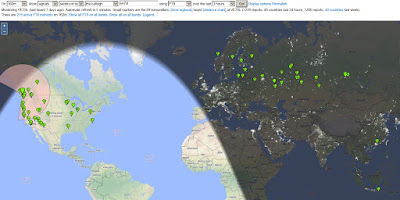 |
| courtesy: https://www.pskreporter.info/pskmap.html |
FT8 is surely a tempting seductress. So far I have resisted the fast-growing urge to spark-up in this mode on 160m ... but I may be growing weaker. This all looks so very interesting.
 DXing The Utilities (Part 2)
DXing The Utilities (Part 2)
The following blog was originally posted in 2015 but might still be of interest to anyone with a shortwave radio! Since the migration of HF aero traffic to satellite has been slow, there is still a lot of oceanic traffic to be monitored on the bands, 24/7.
**************************************
Unlike the growing scarcity of good HF maritime DX targets, there is still a large amount of HF aero activity to enjoy! Even with the move to satellite comms, there is still, at any given time of the day or night, hundreds of aircraft using HF radio to communicate with controllers, companies and home bases. Both commercial aviation and the military, as well as many privately owned aircraft, use the HF communication networks to keep them flying safely. From trans-oceanic 777s' and military transports to single engine float planes in the Canadian Arctic and Alaska, the sky is alive with DXing opportunities!
A huge percentage of commercial aircraft are delegated to moving freight and many of them can be heard on HF radio. Many of the planes in use are retired passenger planes that have been reconfigured for moving cargo. Back when I did this type of listening, older DC-8s seemed to be particularly popular, especially on the nightly South / Central America to Florida routes. I suspect that nowadays, these have been replaced with older DC-10's and 747's.

'FINE AIR 432' was logged on March 24,1996 at 0435Z while working Miami Radio on 6637kHz. The DC8-51F (Freighter) was over Bogota while enroute from Lima to Miami.
 'NIPPON CARGO 083', a 747-200F, was logged
'NIPPON CARGO 083', a 747-200F, was logged
on 8891kHz working Baffin Radio. They were reporting position "LT", a waypoint above Alert, at 82-31N / 62-12W, westbound on Polar Track "Quebec".
The freighter was enroute Amsterdam to Anchorage.

The Antonov 124-100 is a gigantic Russian built freighter - capable of transporting in excess of
120 tons. This is aircraft "RA-82045" which was logged as 'HEAVYLIFT 878' in June, 1996.
Operated by Volga-Dnepr, 'HEAVYLIFT 878' was working Dakar (Senegal) Aeradio on 6535kHz reporting FL240 and position 13-14N / 24-26W enroute Cape Verde Islands to Sao Paulo, Brazil.
'AFM 01' was a DC8-55F logged while working Brazzaville Radio (Congo) on 8903kHz. It was at FL350, enroute Harare, Zimbabwe to Kano, Nigeria at the "MPK" waypoint, 250 miles east of Kinshasha, Zaire. Brazzavile was advising of 'crossing traffic, same level...please say intentions'... Yikes!
On another evening I heard the Dakar (Senegal) controller advise a British Speedbird 747 to 'go to flight level 330 ... please go now ... go very very fast'.
'AFM01' (Affretair) was Z-WMJ, shown here on final approach to Gatwick.
 'PACIFIC AIR EXPRESS 3517' was heard on 8867kHz working Brisbane Radio while over the Coral Sea. The Lockheed L-188C four-engine turbo prop was enroute Honiara to Brisbane with a load of fresh tuna destined for the Japanese market. N360Q, shown on the ground at Honiara, was leased from the states and operated by Charrak Air.
'PACIFIC AIR EXPRESS 3517' was heard on 8867kHz working Brisbane Radio while over the Coral Sea. The Lockheed L-188C four-engine turbo prop was enroute Honiara to Brisbane with a load of fresh tuna destined for the Japanese market. N360Q, shown on the ground at Honiara, was leased from the states and operated by Charrak Air.
 The U.S. military is still active on HF radio and some interesting catches can be had. During the testing phase of the 'cruise' missile, the missile navigation systems were tested over the Northern Territories and Alberta. Once dropped from their B-52 launch platforms, the missiles were tracked across Alberta by Advanced Range Instrumentation Aircraft (ARIA). 'AGAR 93' was heard on one such mission on 11176kHz. 'AGAR 93' was # 81-0893, an EC-18 (modified Boeing 707) out of Wright Patterson' 4950th Test Wing. According to the aircraft commander who signed my verification, the aircraft was approximately 1 hour S.E. of Namao, Alberta. One can easily see why # 81-0893, shown here, was affectionately known as "The Beast".
The U.S. military is still active on HF radio and some interesting catches can be had. During the testing phase of the 'cruise' missile, the missile navigation systems were tested over the Northern Territories and Alberta. Once dropped from their B-52 launch platforms, the missiles were tracked across Alberta by Advanced Range Instrumentation Aircraft (ARIA). 'AGAR 93' was heard on one such mission on 11176kHz. 'AGAR 93' was # 81-0893, an EC-18 (modified Boeing 707) out of Wright Patterson' 4950th Test Wing. According to the aircraft commander who signed my verification, the aircraft was approximately 1 hour S.E. of Namao, Alberta. One can easily see why # 81-0893, shown here, was affectionately known as "The Beast".
'DOOM 81' was a gigantic B-52H from the 96th Bomb Squadron, stationed at Barksdale AFB, LA. The appropriately named big bomber was heard on 11176kHz while working Ascension Radio and was just about to rendezvous with their mid-air refueler when the mission was aborted. This was the first and only B-52 that I was ever able to confirm.
 'ROMA 99' was logged on 17975kHz while working Thule Radio. They were taxiing for takeoff at Dulles International in Washington D.C. and reporting a minor fuel-pump problem. 'ROMA 99' was a KC-135R Stratotanker, # 62-003512, from the 509th Air Refueling Squadron at Griffis AFB, NY.
'ROMA 99' was logged on 17975kHz while working Thule Radio. They were taxiing for takeoff at Dulles International in Washington D.C. and reporting a minor fuel-pump problem. 'ROMA 99' was a KC-135R Stratotanker, # 62-003512, from the 509th Air Refueling Squadron at Griffis AFB, NY.
'REACH 71839' was heard on 11176kHz while working Albrook AFB, Alaska. Tail # 65-0239, this 'REACH' flight was an aging C-141B Starlifter, at one point, the Air Force's major transporter. 'REACH 71839', out of McChord AFB, was enroute Brazil to Puerto Rico.
There's still plenty to be heard on HF, outside of the amateur bands and a quick internet search on 'Utility DX' will turn up several interesting and informative sites ... each one having an abundance of related links to follow. Here are some that will be helpful:
**************************************
A freshly updated list of all active HF aero frequencies. Also check their list of active aero 'callsigns'
http://monitor-post.blogspot.ca/p/this-international-hf-aero-frequency.html
If you can catch an aircraft's four-letter SELCAL code, often given during waypoint checks, you can search here for more info on the actual aircraft itself:
http://www.airframes.org/reg/b18305
The Milcom Blogspot:
http://mt-milcom.blogspot.ca/
**************************************
Unlike the growing scarcity of good HF maritime DX targets, there is still a large amount of HF aero activity to enjoy! Even with the move to satellite comms, there is still, at any given time of the day or night, hundreds of aircraft using HF radio to communicate with controllers, companies and home bases. Both commercial aviation and the military, as well as many privately owned aircraft, use the HF communication networks to keep them flying safely. From trans-oceanic 777s' and military transports to single engine float planes in the Canadian Arctic and Alaska, the sky is alive with DXing opportunities!
A huge percentage of commercial aircraft are delegated to moving freight and many of them can be heard on HF radio. Many of the planes in use are retired passenger planes that have been reconfigured for moving cargo. Back when I did this type of listening, older DC-8s seemed to be particularly popular, especially on the nightly South / Central America to Florida routes. I suspect that nowadays, these have been replaced with older DC-10's and 747's.

'FINE AIR 432' was logged on March 24,1996 at 0435Z while working Miami Radio on 6637kHz. The DC8-51F (Freighter) was over Bogota while enroute from Lima to Miami.
 'NIPPON CARGO 083', a 747-200F, was logged
'NIPPON CARGO 083', a 747-200F, was loggedon 8891kHz working Baffin Radio. They were reporting position "LT", a waypoint above Alert, at 82-31N / 62-12W, westbound on Polar Track "Quebec".
The freighter was enroute Amsterdam to Anchorage.

The Antonov 124-100 is a gigantic Russian built freighter - capable of transporting in excess of
120 tons. This is aircraft "RA-82045" which was logged as 'HEAVYLIFT 878' in June, 1996.
Operated by Volga-Dnepr, 'HEAVYLIFT 878' was working Dakar (Senegal) Aeradio on 6535kHz reporting FL240 and position 13-14N / 24-26W enroute Cape Verde Islands to Sao Paulo, Brazil.
'AFM 01' was a DC8-55F logged while working Brazzaville Radio (Congo) on 8903kHz. It was at FL350, enroute Harare, Zimbabwe to Kano, Nigeria at the "MPK" waypoint, 250 miles east of Kinshasha, Zaire. Brazzavile was advising of 'crossing traffic, same level...please say intentions'... Yikes!
On another evening I heard the Dakar (Senegal) controller advise a British Speedbird 747 to 'go to flight level 330 ... please go now ... go very very fast'.
'AFM01' (Affretair) was Z-WMJ, shown here on final approach to Gatwick.
 'PACIFIC AIR EXPRESS 3517' was heard on 8867kHz working Brisbane Radio while over the Coral Sea. The Lockheed L-188C four-engine turbo prop was enroute Honiara to Brisbane with a load of fresh tuna destined for the Japanese market. N360Q, shown on the ground at Honiara, was leased from the states and operated by Charrak Air.
'PACIFIC AIR EXPRESS 3517' was heard on 8867kHz working Brisbane Radio while over the Coral Sea. The Lockheed L-188C four-engine turbo prop was enroute Honiara to Brisbane with a load of fresh tuna destined for the Japanese market. N360Q, shown on the ground at Honiara, was leased from the states and operated by Charrak Air. The U.S. military is still active on HF radio and some interesting catches can be had. During the testing phase of the 'cruise' missile, the missile navigation systems were tested over the Northern Territories and Alberta. Once dropped from their B-52 launch platforms, the missiles were tracked across Alberta by Advanced Range Instrumentation Aircraft (ARIA). 'AGAR 93' was heard on one such mission on 11176kHz. 'AGAR 93' was # 81-0893, an EC-18 (modified Boeing 707) out of Wright Patterson' 4950th Test Wing. According to the aircraft commander who signed my verification, the aircraft was approximately 1 hour S.E. of Namao, Alberta. One can easily see why # 81-0893, shown here, was affectionately known as "The Beast".
The U.S. military is still active on HF radio and some interesting catches can be had. During the testing phase of the 'cruise' missile, the missile navigation systems were tested over the Northern Territories and Alberta. Once dropped from their B-52 launch platforms, the missiles were tracked across Alberta by Advanced Range Instrumentation Aircraft (ARIA). 'AGAR 93' was heard on one such mission on 11176kHz. 'AGAR 93' was # 81-0893, an EC-18 (modified Boeing 707) out of Wright Patterson' 4950th Test Wing. According to the aircraft commander who signed my verification, the aircraft was approximately 1 hour S.E. of Namao, Alberta. One can easily see why # 81-0893, shown here, was affectionately known as "The Beast".'DOOM 81' was a gigantic B-52H from the 96th Bomb Squadron, stationed at Barksdale AFB, LA. The appropriately named big bomber was heard on 11176kHz while working Ascension Radio and was just about to rendezvous with their mid-air refueler when the mission was aborted. This was the first and only B-52 that I was ever able to confirm.
 'ROMA 99' was logged on 17975kHz while working Thule Radio. They were taxiing for takeoff at Dulles International in Washington D.C. and reporting a minor fuel-pump problem. 'ROMA 99' was a KC-135R Stratotanker, # 62-003512, from the 509th Air Refueling Squadron at Griffis AFB, NY.
'ROMA 99' was logged on 17975kHz while working Thule Radio. They were taxiing for takeoff at Dulles International in Washington D.C. and reporting a minor fuel-pump problem. 'ROMA 99' was a KC-135R Stratotanker, # 62-003512, from the 509th Air Refueling Squadron at Griffis AFB, NY.'REACH 71839' was heard on 11176kHz while working Albrook AFB, Alaska. Tail # 65-0239, this 'REACH' flight was an aging C-141B Starlifter, at one point, the Air Force's major transporter. 'REACH 71839', out of McChord AFB, was enroute Brazil to Puerto Rico.
There's still plenty to be heard on HF, outside of the amateur bands and a quick internet search on 'Utility DX' will turn up several interesting and informative sites ... each one having an abundance of related links to follow. Here are some that will be helpful:
**************************************
A freshly updated list of all active HF aero frequencies. Also check their list of active aero 'callsigns'
http://monitor-post.blogspot.ca/p/this-international-hf-aero-frequency.html
If you can catch an aircraft's four-letter SELCAL code, often given during waypoint checks, you can search here for more info on the actual aircraft itself:
http://www.airframes.org/reg/b18305
The Milcom Blogspot:
http://mt-milcom.blogspot.ca/
 DXing The Utilities (Part 1)
DXing The Utilities (Part 1)
The following blog was originally posted in 2015 but might still be of interest to anyone with a shortwave radio! Although maritime CW has all but vanished from HF, ships can still be logged and followed on digital modes, using DSC or Digital Selective Calling.
*******************************
 After building the house here on Mayne Island, in the early 90's, it was several years until I was able to set up a dedicated station. In the meantime, I limited my radio activities strictly to listening. I had a nice Icom R-71A set up in a hall closet and spent my radio-time, mostly on weekend evenings, listening to maritime CW, HF aeronautical traffic and, of course, NDBs below the broadcast band.
After building the house here on Mayne Island, in the early 90's, it was several years until I was able to set up a dedicated station. In the meantime, I limited my radio activities strictly to listening. I had a nice Icom R-71A set up in a hall closet and spent my radio-time, mostly on weekend evenings, listening to maritime CW, HF aeronautical traffic and, of course, NDBs below the broadcast band.My HF receiving antenna consisted of three inverted-V's ... one for 160m, the second for 80m and the third for 40m ... all fed from the same coaxial line at the top of a 70' Balsam. It didn't take long to realize what an exceptional radio location I had, living right at the edge of the ocean, with dozens of miles of saltwater in most directions other than due west.
I really enjoyed following evening airline flights across both the North and South Atlantic, and in the early winter afternoons, following the commercial air-traffic all over Africa. Even though listening on 5 or 6MHz, I was amazed at how strong the signals from airliners over Africa at 30,000 feet or more could become, this far to the west. In the early mornings, directions were reversed and traffic from the far east, right into India, was fairly common. Often, small single-engine planes, usually run by various missionaries, could be heard while on the ground, taxiing at remote field locations and calling in via HF radio to request takeoff and flight-following.
Now QSL's have always been one of my top radio interests and it wasn't long before I started sending and collecting verifications for both the aircraft and the ships I was hearing ... once I had figured out how to get my reception reports to their proper destinations.
A very small portion of my 'utility' QSL collection is shown below. For the most part, it consists of PRC's or 'Prepared Reply Cards', with blank portions to be filled-in by the verification signers. Surprisingly, my return rate was around 90% and verifications were often returned with long, hand-written letters and numerous photographs ... especially from the ship RO's, as I suspect their days at sea were often quite monotonous. Even many of the military and commercial aircraft pilots would return a handwritten note along with the filled-in verification card, which I found even more surprising. It seemed that most were very surprised to hear that their radio transmissions were even making it this far and could be heard so readily.
 Some of the most interesting catches came from the Pacific, with a large variety of ships operating out of Japan. There are probably still several maritime CW stations operating in Japan. Many of these were owned and operated by commercial fishing companies and could be heard working fleet vessels throughout the Pacific on their daily CW skeds.
Some of the most interesting catches came from the Pacific, with a large variety of ships operating out of Japan. There are probably still several maritime CW stations operating in Japan. Many of these were owned and operated by commercial fishing companies and could be heard working fleet vessels throughout the Pacific on their daily CW skeds.This interesting catch from the North Pacific was the Japanese 'fisheries research vessel' 'M/V FUJI MARU'. She was about 1200 miles NW of her CW contact, JNA in Tokyo.
A Japanese cruise-ship, the 'M/V ORIENT VENUS' was logged early one summer morning while working JNA on 8355 KHz CW. Her position indicates she was in the Mariana Islands.
One of my first catches from the Great Lakes
was the 'M/V Oglebay Norton', a huge bulk
carrier out of Detroit. Her 150W signal was loud and clear late one August evening while in contact with WLC, Rogers City Radio.
 The U.S. Coast Guard is still one of the best QSLers around.
The U.S. Coast Guard is still one of the best QSLers around.Several of their stations will QSL with a nice printed card.
NMC (San Francisco) and NMO (Hawaii) were two
catches, regularly heard on the old 500 KHz calling
frequency.
Stormy weather often provided a good chance
to catch a search and rescue mission in progress.
'Rescue 6008' was an HH-60J helo enroute from
Chesapeake Bay to Elizabeth City, North Carolina during
a midnight rescue operation.

Although not my farthest HF maritime catch,
this was one of the most surprising. 'C4PC'
was heard early one February evening on 8 MHz CW, when conditions seemed terrible. No other ships were heard on the band at the time. As I learned later, the 'M/V MAIROULI' was at anchor near Beirut, Lebanon, a distance of nearly 7,000 miles from Mayne Island.
.... cont'd
 Hunting For NDBs in CLE250
Hunting For NDBs in CLE250
 |
| YMW - 366 courtesy: ve3gop.com |
There is no doubt that as one ages, the passage of time seems to accelerate. Didn't we just have a CLE a couple of days ago?? In any event, this weekend finds CLE 250 focusing on 350.0 - 369.9 kHz, in search of NDBs.
For those unfamiliar with this monthly activity, a 'CLE' is a 'Co-ordinated Listening Event', as NDB DXers around the world focus their listening time on one small slice of the NDB spectrum.
If you've been meaning to participate in CLE, then maybe this weekend is a fine time to try! We continue to have a lot of first time submissions so you won't be alone!
As well, if you're trying to learn CW, copying NDBs is perfect practice as the identifier speed is generally slow and the letters are repeated again every few seconds!
A nice challenge in this one is to hear YMW - 366 kHz. 'YMW' is located in southwest Quebec, near Maniwaki.
'YMW' runs 500W into a massive vertical and is well-heard throughout North America as well as in Europe. Listen for its upper-sideband CW identifier repeated every 10 seconds (with your receiver in the CW mode) on 366.398 kHz.
This past week has seen the best propagation of the season so far. Hopefully it will extend into the CLE weekend ... but, it will be interesting to see if our CLE once again gets whacked by the Sun, just as it gets started. This has been the case for the past several CLEs as our monthly schedule seems synced with some nasty coronal hole on the Sun, also on a ~ 27 day cycle!
When tuning for NDBs, put your receiver in the CW mode and listen for the NDB's CW identifier, repeated every few seconds. Listen for U.S. NDB identifiers approximately 1 kHz higher or lower than the published transmitted frequency since these beacons are modulated with a 1020 Hz tone approximately.
For example, 'AA' near Fargo, ND, transmits on 365 kHz and its upper sideband CW identifier is tuned at 366.025 kHz while its lower sideband CW ident can be tuned at 363.946 kHz. Its USB tone is actually 1025 Hz while its LSB tone is 1054 Hz.
Often, one sideband will be much stronger than the other so if you don't hear the first one, try listening on the other sideband.
Canadian NDBs normally have an USB tone only, usually very close to 400 Hz. They also have a long dash (keydown) following the CW identifier.
All NDBs heard in North America will be listed in the RNA database (updated daily) while those heard in Europe may be found in the REU database. Beacons heard outside of these regions will be found in the RWW database.
From CLE organizer Brian Keyte, G3SIA, comes the details:
Our 250th Co-ordinated Listening Event is almost here.
Can new 'listening eventers' join in too? YES, PLEASE! Joachim and I are
always pleased to help first-time CLE logs through the harvester program.
Days: Friday 22 November - Monday 25 November
Times: Start and End at midday, your LOCAL time
Range: 350.0 - 369.9 kHz
Please log all the NDBs you can identify that are listed in this range (it
includes 350 kHz but not 370) plus any UNIDs that you come across there.
You can find full information to help you, including seeklists made from
RNA/REU/RWW, by going to the CLE page http://www.ndblist.info/cle.htm
and clicking on SEEKLIST.
Please send your 'Final' CLE log to the List, if possible as a plain text
email and not in an attachment, with 'CLE250' and 'FINAL' at the start of
its title.
Please show the following main items FIRST on EVERY line of your log:
# The full Date (e.g. 2019-11-22) or just the day number (e.g. 22)
and UTC (the day changes at 00:00 UTC).
# kHz - the beacon's nominal published frequency, if you know it.
# The Call Ident.
Optional details such as Location and Distance go LATER in the same line.
If you measure LSB/USB offsets and cycle times they are useful too.
Please always include details of your own location and brief details of the
receiver, aerial(s) and any recording equipment you were using, etc.
Joachim or I will send the usual 'Any More Logs?' email at about 20:00 UTC
on Tuesday so you can check that your log has been found OK.
Do make sure that your log has arrived at the very latest by 09:00 UTC on
Wednesday 27 November. We hope to make all the combined results
within a day or so.
Good listening
Brian
------------------------------------------------------------------
From: Brian Keyte G3SIA ndbcle'at'gmail.com
Location: Surrey, SE England (CLE coordinator)
------------------------------------------------------------------
(Reminder: If you wish you can use a remote receiver for your loggings,
stating its location and owner - with their permission if required.
A remote listener may NOT also use another receiver, whether local or
remote, to obtain further loggings for the same CLE)
These monthly listening events serve several purposes. They:
- determine, worldwide, which beacons are actually in service and on-the-air so the online database can be kept up-to-date
- determine, worldwide, which beacons are out-of-service or have gone silent since the last CLE covering this range
- will indicate the state of propagation conditions at the various participant locations
- will give you an indication of how well your LF/MF receiving system is working
- give participants a fun yet challenging activity to keep their listening skills honed
The NDB List Group is a great place to learn more about the 'Art of NDB DXing' or to meet other listeners in your region. There is a lot of good information available there and new members are always very welcome. As well, you can follow the results of other CLE participants from night to night as propagation is always an active topic of discussion.
You need not be an NDB List member to participate in the CLEs and all reports, no matter how small, are of much value to the organizers.
Remember - 'First-time' logs are always VERY welcome!
Reports may be sent to the NDB List Group or e-mailed to CLE co-ordinator, Brian Keyte (G3SIA), whose address appears above. If you are a member of the group, all final results will also be e-mailed and posted there.
Please ... give the CLE a try ... then let us know what NDB's can be heard from your location! Your report can then be added to the worldwide database to help keep it up-to-date.
Have fun and good hunting!
 Here Comes The ’29 QSO Party!
Here Comes The ’29 QSO Party!
Saturday, November 9th, as well as the following Saturday (16th), will see the annual running of the Bruce Kelley 1929 QSO Party, otherwise known as the '1929 BK'.
Only transmitters that are 'era-appropriate' are allowed to be used. More specifically, transmitters must employ tubes that were available in 1929 or earlier, and transmitters must be self-excited. No crystals allowed! Crystals were new and largely unaffordable for most hams back in the depression days.
The year of 1929 marked a real turning point in amateur radio as governments finally cracked-down on things such as frequency stability, out of band operations and re-alignment of call districts. In short, hams were henceforth required to behave themselves and to clean up their signals and methods of operation.
 |
| courtesy: http://www.arrl.org/ |
If you tune across the CW bands during these two upcoming Saturday nights, you will have the rare opportunity to hear exactly what the bands would have sounded like back in the very early '30s'.
For the most part you will hear single-tube Hartley, Colpitts or TNT oscillators along with a few two-tube MOPAs thrown in. Many of them will suffer the same problems encountered by the boys of '29 ... chirp, drift, buzzy notes and frequency instability from antennas swaying in the wind.
The MOPAs will sound much better but some surprisingly nice-sounding signals can be heard coming from properly tuned and optimised single-tube oscillators. I recall being blown away by the lovely sounding signal I heard from such a rig when first tuning into the BK activity several years ago, only to learn that it was a self-excited Hartley using 1/4" copper tubing for the oscillator tank circuit!
The '29 watering-hole on 80m will be around 3550-3580 kilocycles (be careful not to confuse this with kilohertz!) while the early afternoon to post-sunset 40m activity will be found from 7100-7125 kc. There may even be a few on the very low end of 160m. Although many of these transmitter styles were used on 20m and higher, the BK rule-makers have wisely decided not to inflict these sounds on the present ham populace as it would likely keep the 'Official Observers' busy for several days writing pink-slips.
Like last year, I will set up my Hull Hartley (160, 80, 40m), as I haven't used it much since building the MOPA a few years ago. If it's very windy (almost assured), the Hartley will really sound like 1929!
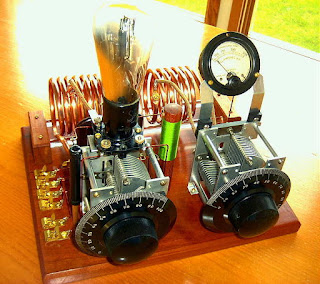 |
| My Hull Hartley |
You can learn more about amateur radio happenings leading up to and following the 1929 crackdown in my earlier series of 'Why '29' blogs here:
Part 2
Part 3
Part 4
Those wishing to put something together for next year's event can find everything needed here:
Building '29-Style - Part 1
Building '29-Style - Part 2
Let's hope for good conditions for this event as the last few years have been adversely affected by geomagnetic storming. Poor propagation or not, I guarantee there will be plenty of '29ers busy calling 'CQ AWA' on the low bands.
Complete BK details are available here.







